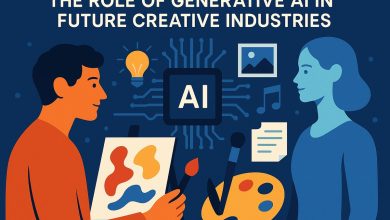Innovation is revolutionizing AI chatbots and the technology they run on more every year. Gone are the days when chatbots could only answer preprogrammed questions. Many of today’s cutting-edge versions can carry on lifelike conversations thanks to natural language processing.
Still, AI chatbots have some key challenges to overcome. Doing this will be highly influential in the development of these bots moving forward.
AI Chatbots Today
Today’s AI chatbots are in a transition phase across the board. Some organizations continue to use rudimentary versions that are only capable of preprogrammed responses. They have become what people generally think of when they hear the word “chatbot,” often with a negative connotation. Newer ones capable of much more sophisticated interaction will need to offer top-notch performance to overcome this reputation.
Natural language processing (NLP) is changing chatbots and AI forever. They can process what people are saying, via text and voice, and return realistic responses. Chatbots still isn’t the equivalent of humans, but they are becoming far more capable than previous generations were.
What’s Next for AI Chatbots
The main challenges that today’s AI chatbots face are training, security, and transparency. These issues are shaping this tech’s future. They will evolve in a few specific areas in the years ahead.
1. Conversational AI
Conversational AI is already on the rise. In fact, the global market has a compounded annual growth rate of 22% for 2020 through 2025. The CAGR for the 2030s is likely to be even higher. This investment drives innovation and development in conversational AI, expanding its capabilities even further with deep learning and improved NLP.
Innovation will likely make conversational AI more accessible and affordable, allowing wider adoption. Additionally, training will become easier as usage and adoption grow. One of the main issues with today’s AI chatbots is that they remain expensive to train. Refined processes will help make sophisticated conversational versions more affordable.
2. New Applications
AI chatbots are most well-known for their use in customer service. Innovations and better technology will open up many more applications over the next decade. Businesses, in particular, will benefit from these advancements. For example, new AI chatbots with advanced translation capabilities could help companies expand globally and improve international customer service. Advanced translation AI has already been in development for years, so this specific innovation could go mainstream shortly.
Similarly, AI chatbots will likely become more popular in human resources departments worldwide. This is a straightforward shift from customer service to employee service bots. HR versions are also likely to become popular soon. They may gain ground in employee training, IT help and administrative assistance functions.
3. Growth Through Social Media
Social media may not be the first thing that comes to mind when discussing AI chatbots. However, it plays an important role in increasing consumer awareness of these bots. In fact, Facebook’s Messenger app featured 100,000 active bots in 2017. That number has undoubtedly grown since then.
Some AI chatbots focus on customer service, but others are simply free-to-use varieties that people talk to for fun. They may not be pushing the limits of AI technology, but they are crucial to shifting consumer perceptions of this technology. For example, more sophisticated chatbots could be launched on social media for therapy or educational applications.
4. Better Security
Cybersecurity has never been more important. Numerous types of cyberattacks skyrocketed in 2021, particularly ransomware and phishing. AI chatbots are not exempt from the threat of these attacks. In fact, increasing consumer trust depends on improving their defenses.
AI chatbots often collect personal information, such as payment data in customer service functions. Protection will be a top priority for these bots in the future. This becomes even more important with voice chatbots, such as those found in smart speakers. Consumers need to know they can trust these devices to not save or risk any sensitive information.
5. Greater Transparency
AI has gained a poor reputation with consumers over recent years due to the issue of data bias. For example, Amazon made headlines when it shut down its hiring AI after discovering the model was biased against female candidates. This is the result of AI training gone wrong and leading to discrimination. Even worse, these biases are difficult to detect in conventional AI models until they’ve already been in use for a while.
Consumers need to know that they can trust AI for these chatbots to be effective. Some may fear substandard service based on certain personal characteristics. Others may worry that it may endanger their personal information. Luckily, new advancements in AI development are resolving the issue of transparency.
Explainable AI models are steadily rising in popularity because they allow developers to see exactly how they reach their conclusions. This lets developers catch data biases and security vulnerabilities before going live.
Innovating With AI Chatbots
AI chatbot technology is on an exciting growth trajectory. It will become much more secure, capable and versatile in the years to come due to increased investment and new technical innovations. Organizations and users in virtually every industry and niche can benefit from these bots, whether in customer service or behind the scenes. The AI chatbots of the future will be accessible, trustworthy communication tools.


